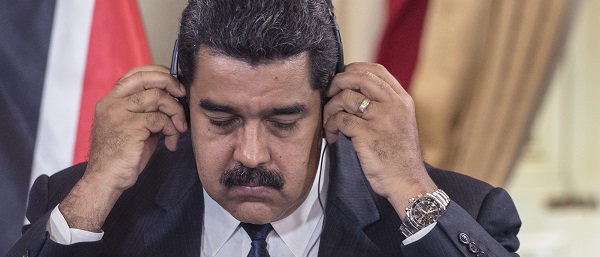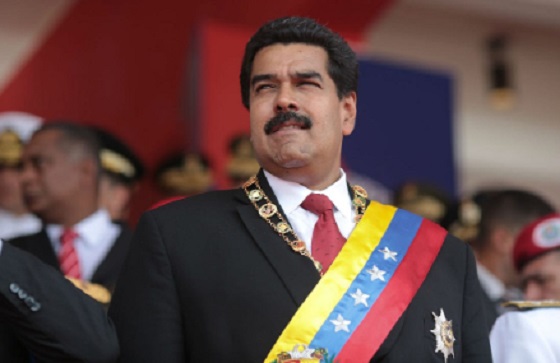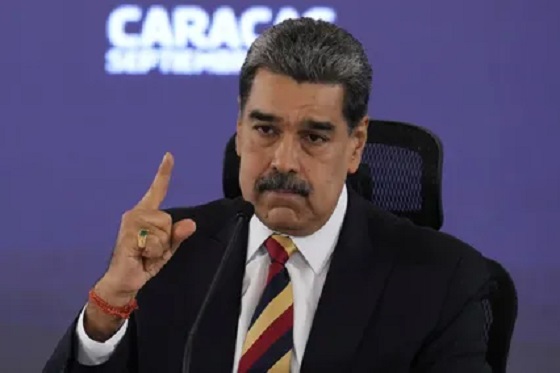Environment
World faces ‘impossible’ task at post-Paris climate talks

KATOWICE, Poland — Three years after sealing a landmark global climate deal in Paris, world leaders are gathering again to agree on the fine print.
The euphoria of 2015 has given way to sober realization that getting an agreement among almost 200 countries, each with their own political and economic demands, will be challenging — as evidenced by President Donald Trump’s decision to pull the United States out of the Paris accord, citing his “America First” mantra.
“Looking from the outside perspective, it’s an impossible task,” Poland’s deputy environment minister, Michal Kurtyka, said of the talks he will preside over in Katowice from Dec. 2-14.
Top of the agenda will be finalizing the so-called Paris rulebook, which determines how countries have to count their greenhouse gas emissions, transparently report them to the rest of the world and reveal what they are doing to reduce them.
Seasoned negotiators are calling the meeting, which is expected to draw 25,000 participants, “Paris 2.0” because of the high stakes at play in Katowice.
Forest fires from California to Greece, droughts in Germany and Australia, tropical cyclones Mangkhut in the Pacific and Michael in the Atlantic — scientists say this year’s extreme weather offers a glimpse of disasters to come if global warming continues unabated.
A recent report by the International Panel on Climate Change warned that time is running out if the world wants to achieve the most ambitious target in the Paris agreement — keeping global warming at 1.5 Celsius (2.7 Fahrenheit). The planet has already warmed by about 1 degree since pre-industrial times and it’s on course for another 2-3 degrees of warming by the end of the century unless drastic action is taken.
The conference will have “quite significant consequences for humanity and for the way in which we take care of our planet,” Kurtyka told the Associated Press ahead of the talks.
Experts agree that the Paris goals can only be met by cutting emissions of carbon dioxide and other greenhouse gases to net zero by 2050.
But the Paris agreement let countries set their own emissions targets. Some are on track, others aren’t. Overall, the world is heading the wrong way.
Last week, the World Meteorological Organization said globally averaged concentrations of carbon dioxide reached a new record in 2017, while the level of other heat-trapping gases such methane and nitrous oxide also rose.
2018 is expected to see another 2
“Everyone recognized that the national plans, when you add everything up, will take us way beyond 3, potentially 4 degrees Celsius warming,” said Johan Rockstrom, the incoming director of the Potsdam Institute for Climate Impact Research.
“We know that we’re moving in the wrong direction,” said Rockstrom. “We need to bend the global carbon emissions no later than 2020 — in two years’ time — to stand a chance to stay under 2 degrees Celsius.”
Convincing countries to set new, tougher targets for emissions reduction by 2020 is a key challenge in Katowice.
Doing so will entail a transformation of all sectors of their economies, including a complete end to burning fossil fuel.
Poor nations want rich countries to pledge the biggest cuts, on the grounds that they’re responsible for most of the carbon emissions in the atmosphere. Rich countries say they’re willing to lead the way, but only if poor nations play their part as well.
“Obviously not all countries are at the same stage of development,” said Lidia Wojtal, an associate with Berlin-based consultancy Climatekos and a former Polish climate negotiator. “So we need to also take that into account and differentiate between the responsibilities. And that’s a huge task.”
Among those likely to be pressing hardest for ambitious measures will be small island nations , which are already facing serious challenges from climate change.
The U.S., meanwhile, is far from being the driving force it was during the Paris talks under President Barack Obama. Brazil and Australia, previously staunch backers of the accord, appear to be following in Trump’s footsteps.
Some observers fear nationalist thinking on climate could scupper all hope of meaningful progress in Katowice. Others are more optimistic.
“We will soon see a large enough minority of significant economies moving decisively in the right direction,” said Rockstrom. “That can have spillover effects which can be positive.”
Poland could end up playing a crucial role in bringing opposing sides together. The country has already presided over three previous rounds of climate talks, and its heavy reliance on carbon-intensive coal for energy is forcing Warsaw to mull some tough measures in the years ahead.
The 24th Conference of the Parties, or COP24 as it’s known, is being held on the site of a Katowice mine that was closed in 1999, after 176 years of coal production. Five out of the city’s seven collieries have been closed since the 1990s, as Poland phased out communist-era subsidies and moved to a market economy.
Still, in another part of the city, some 1,500 miners continue to extract thousands of tons of coal daily.
Poland intends to send a signal that their future, and by extension that of millions of others whose jobs are at risk from decarbonization, isn’t being forgotten. During the first week of talks, leaders are expected to sign a Polish-backed declaration calling for a ‘just transition’ that will “create quality jobs in regions affected by transition to a low-carbon economy.”
Then, negotiators will get down to the gritty task of trimming a 300-page draft into a workable and meaningful agreement that governments can sign off on at the end of the second week.
“(I) hope that parties will be able to reach a compromise and that we will be able to say that Katowice contributed positively to this global effort,” Kurtyka said.
___
Frank Jordans reported from Berlin.
___
Follow Frank Jordans on Twitter at http://www.twitter.com/wirereporter
Frank Jordans And Monika Scislowska, The Associated Press
Agriculture
The Climate Argument Against Livestock Doesn’t Add Up

From the Frontier Centre for Public Policy
Livestock contribute far less to emissions than activists claim, and eliminating them would weaken nutrition, resilience and food security
The war on livestock pushed by Net Zero ideologues is not environmental science; it’s a dangerous, misguided campaign that threatens global food security.
The priests of Net Zero 2050 have declared war on the cow, the pig and the chicken. From glass towers in London, Brussels and Ottawa, they argue that cutting animal protein, shrinking herds and pushing people toward lentils and lab-grown alternatives will save the climate from a steer’s burp.
This is not science. It is an urban belief that billions of people can be pushed toward a diet promoted by some policymakers who have never worked a field or heard a rooster at dawn. Eliminating or sharply reducing livestock would destabilize food systems and increase global hunger. In Canada, livestock account for about three per cent of total greenhouse gas emissions, according to Environment and Climate Change Canada.
Activists speak as if livestock suddenly appeared in the last century, belching fossil carbon into the air. In reality, the relationship between humans and the animals we raise is older than agriculture. It is part of how our species developed.
Two million years ago, early humans ate meat and marrow, mastered fire and developed larger brains. The expensive-tissue hypothesis, a theory that explains how early humans traded gut size for brain growth, is not ideology; it is basic anthropology. Animal fat and protein helped build the human brain and the societies that followed.
Domestication deepened that relationship. When humans raised cattle, sheep, pigs and chickens, we created a long partnership that shaped both species. Wolves became dogs. Aurochs, the wild ancestors of modern cattle, became domesticated animals. Junglefowl became chickens that could lay eggs reliably. These animals lived with us because it increased their chances of survival.
In return, they received protection, veterinary care and steady food during drought and winter. More than 70,000 Canadian farms raise cattle, hogs, poultry or sheep, supporting hundreds of thousands of jobs across the supply chain.
Livestock also protected people from climate extremes. When crops failed, grasslands still produced forage, and herds converted that into food. During the Little Ice Age, millions in Europe starved because grain crops collapsed. Pastoral communities, which lived from herding livestock rather than crops, survived because their herds could still graze. Removing livestock would offer little climate benefit, yet it would eliminate one of humanity’s most reliable protections against environmental shocks.
Today, a Maasai child in Kenya or northern Tanzania drinking milk from a cow grazing on dry land has a steadier food source than a vegan in a Berlin apartment relying on global shipping. Modern genetics and nutrition have pushed this relationship further. For the first time, the poorest billion people have access to complete protein and key nutrients such as iron, zinc, B12 and retinol, a form of vitamin A, that plants cannot supply without industrial processing or fortification. Canada also imports significant volumes of soy-based and other plant-protein products, making many urban vegan diets more dependent on long-distance supply chains than people assume. The war on livestock is not a war on carbon; it is a war on the most successful anti-poverty tool ever created.
And what about the animals? Remove humans tomorrow and most commercial chickens would die of exposure, merino sheep would overheat under their own wool and dairy cattle would suffer from untreated mastitis (a bacterial infection of the udder). These species are fully domesticated. Without us, they would disappear.
Net Zero 2050 is a climate target adopted by federal and provincial governments, but debates continue over whether it requires reducing livestock herds or simply improving farm practices. Net Zero advocates look at a pasture and see methane. Farmers see land producing food from nothing more than sunlight, rain and grass.
So the question is not technical. It is about how we see ourselves. Does the Net Zero vision treat humans as part of the natural world, or as a threat that must be contained by forcing diets and erasing long-standing food systems? Eliminating livestock sends the message that human presence itself is an environmental problem, not a participant in a functioning ecosystem.
The cow is not the enemy of the planet. Pasture is not a problem to fix. It is a solution our ancestors discovered long before anyone used the word “sustainable.” We abandon it at our peril and at theirs.
Dr. Joseph Fournier is a senior fellow at the Frontier Centre for Public Policy. An accomplished scientist and former energy executive, he holds graduate training in chemical physics and has written more than 100 articles on energy, environment and climate science.
Environment
Canada’s river water quality strong overall although some localized issues persist

From the Fraser Institute
By Annika Segelhorst and Elmira Aliakbari
Canada’s rivers are vital to our environment and economy. Clean freshwater is essential to support recreation, agriculture and industry, an to sustain suitable habitat for wildlife. Conversely, degraded freshwater can make it harder to maintain safe drinking water and can harm aquatic life. So, how healthy are Canada’s rivers today?
To answer that question, Environment Canada uses an index of water quality to assess freshwater quality at monitoring stations across the country. In total, scores are available for 165 monitoring stations, jointly maintained by Environment Canada and provincial authorities, from 17 in Newfoundland and Labrador, to 8 in Saskatchewan and 20 in British Columbia.
This index works like a report card for rivers, converting water test results into scores from 0 to 100. Scientists sample river water three or more times per year at fixed locations, testing indicators such as oxygen levels, nutrients and chemical levels. These measurements are then compared against national and provincial guidelines that determine the ability of a waterway to support aquatic life.
Scores are calculated based on three factors: how many guidelines are exceeded, how often they are exceeded, and by how much they are exceeded. A score of 95-100 is “excellent,” 80-94 is “good,” 65-79 is “fair,” 45-64 is “marginal” and a score below 45 is “poor.” The most recent scores are based on data from 2021 to 2023.
Among 165 river monitoring sites across the country, the average score was 76.7. Sites along four major rivers earned a perfect score: the Northeast Magaree River (Nova Scotia), the Restigouche River (New Brunswick), the South Saskatchewan River (Saskatchewan) and the Bow River (Alberta). The Bayonne River, a tributary of the St. Lawrence River near Berthierville, Quebec, scored the lowest (33.0).
Overall, between 2021 and 2023, 83.0 per cent of monitoring sites across the country recorded fair to excellent water quality. This is a strong positive signal that most of Canada’s rivers are in generally healthy environmental condition.
A total of 13.3 per cent of stations were deemed to be marginal, that is, they received a score of 45-64 on the index. Only 3.6 per cent of monitoring sites fell into the poor category, meaning that severe degradation was limited to only a few sites (6 of 165).
Monitoring sites along waterways with relatively less development in the river’s headwaters and those with lower population density tended to earn higher scores than sites with developed land uses. However, among the 11 river monitoring sites that rated “excellent,” 8 were situated in areas facing a combination of pressures from nearby human activities that can influence water quality. This indicates the resilience of Canada’s river ecosystems, even in areas facing a combination of multiple stressors from urban runoff, agriculture, and industrial activities where waterways would otherwise be expected to be the most polluted.
Poor or marginal water quality was relatively more common in monitoring sites located along the St. Lawrence River and its major tributaries and near the Great Lakes compared to other regions. Among all sites in the marginal or poor category, 50 per cent were in this area. The Great Lakes-St. Lawrence region is one of the most population-dense and extensively developed parts of Canada, supporting a mix of urban, agricultural, and industrial land uses. These pressures can introduce harmful chemical contaminants and alter nutrient balances in waterways, impairing ecosystem health.
In general, monitoring sites categorized as marginal or poor tended to be located near intensive agriculture and industrial activities. However, it’s important to reiterate that only 28 stations representing 17.0 per cent of all monitoring stations were deemed to be marginal or poor.
Provincial results vary, as shown in the figure below. Water quality scores in Newfoundland and Labrador, Prince Edward Island, New Brunswick, Saskatchewan and Alberta were, on average, 80 points or higher during the period from 2021 to 2023, indicating that water quality rarely departed from natural or desirable levels.
Rivers sites in Nova Scotia, Ontario, Manitoba and B.C. each had average scores between 74 and 78 points, suggesting occasional departures from natural or desirable levels.
Finally, Quebec’s average river water quality score was 64.5 during the 2021 to 2023 period. This score indicates that water quality departed from ideal conditions more frequently in Quebec than in other provinces, especially compared to provinces like Alberta, Saskatchewan and P.E.I. where no sites rated below “fair.”
Overall, these results highlight Canada’s success in maintaining a generally high quality of water in our rivers. Most waterways are in good shape, though some regions—especially near the Great Lakes and along the St. Lawrence River Valley—continue to face pressures from the combined effects of population growth and intensive land use.
-

 Energy2 days ago
Energy2 days agoThe U.S. Just Removed a Dictator and Canada is Collateral Damage
-

 International2 days ago
International2 days agoUS Justice Department Accusing Maduro’s Inner Circle of a Narco-State Conspiracy
-

 Daily Caller1 day ago
Daily Caller1 day agoScathing Indictment Claims Nicolás Maduro Orchestrated Drug-Fueled ‘Culture Of Corruption’ Which Plagued Entire Region
-

 International2 days ago
International2 days agoTrump Says U.S. Strike Captured Nicolás Maduro and Wife Cilia Flores; Bondi Says Couple Possessed Machine Guns
-

 Business2 days ago
Business2 days agoVacant Somali Daycares In Viral Videos Are Also Linked To $300 Million ‘Feeding Our Future’ Fraud
-

 International2 days ago
International2 days ago“Captured and flown out”: Trump announces dramatic capture of Maduro
-

 Haultain Research2 days ago
Haultain Research2 days agoTrying to Defend Maduro’s Legitimacy
-

 Opinion23 hours ago
Opinion23 hours agoHell freezes over, CTV’s fabrication of fake news and our 2026 forecast is still searching for sunshine


